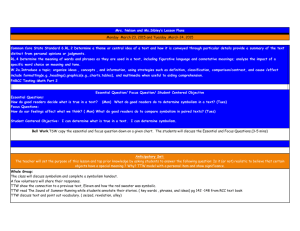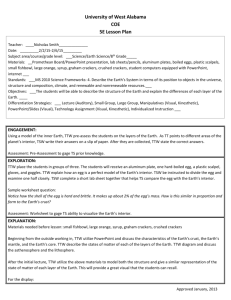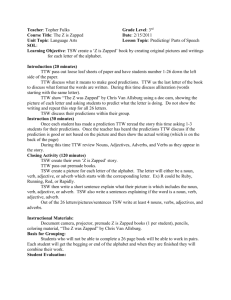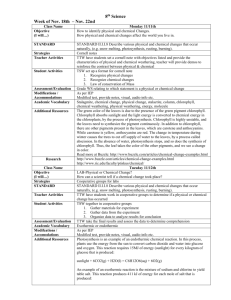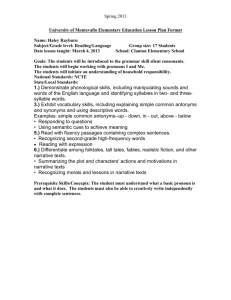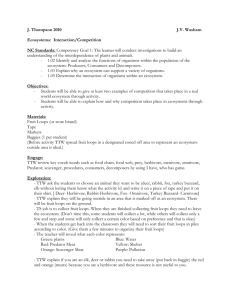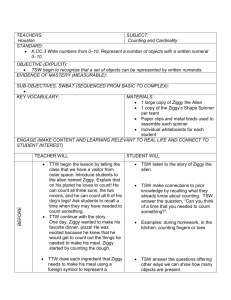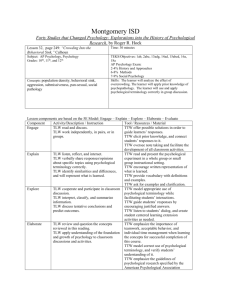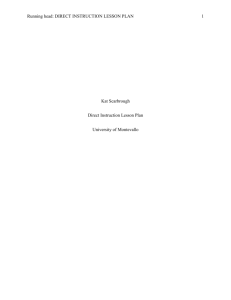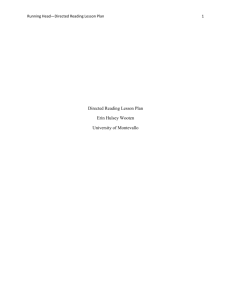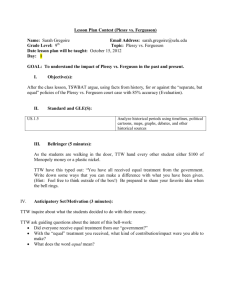K.MD_.3. Classify Objects Lesson Plan
advertisement
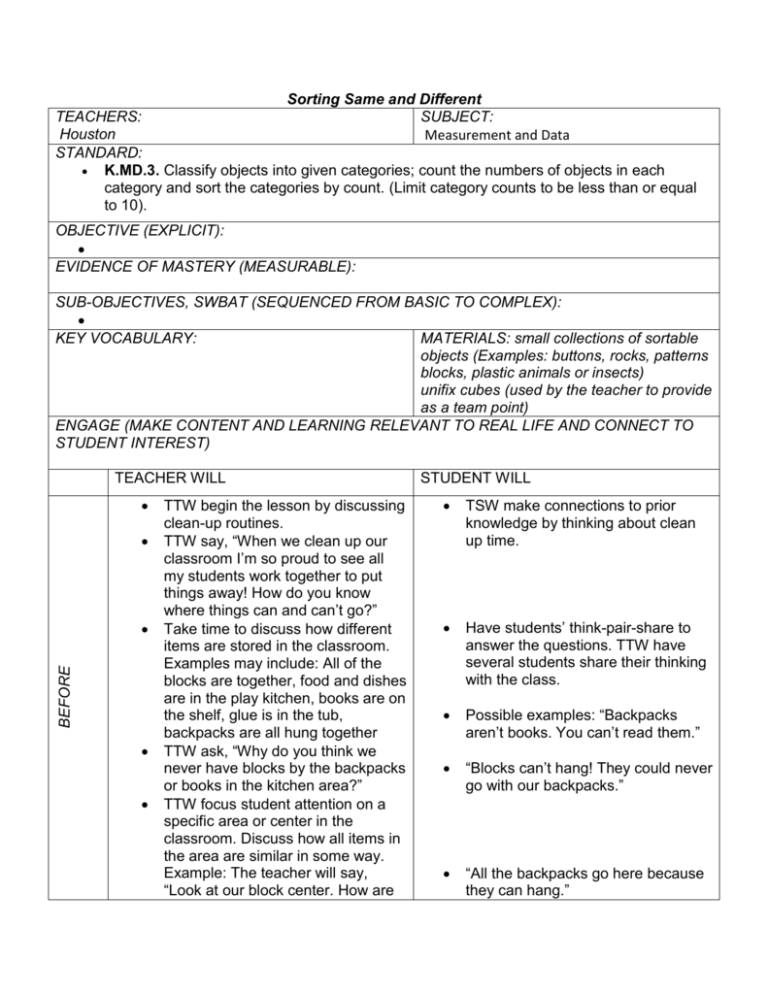
Sorting Same and Different SUBJECT: Measurement and Data TEACHERS: Houston STANDARD: K.MD.3. Classify objects into given categories; count the numbers of objects in each category and sort the categories by count. (Limit category counts to be less than or equal to 10). OBJECTIVE (EXPLICIT): EVIDENCE OF MASTERY (MEASURABLE): SUB-OBJECTIVES, SWBAT (SEQUENCED FROM BASIC TO COMPLEX): KEY VOCABULARY: MATERIALS: small collections of sortable objects (Examples: buttons, rocks, patterns blocks, plastic animals or insects) unifix cubes (used by the teacher to provide as a team point) ENGAGE (MAKE CONTENT AND LEARNING RELEVANT TO REAL LIFE AND CONNECT TO STUDENT INTEREST) TEACHER WILL BEFORE TTW begin the lesson by discussing clean-up routines. TTW say, “When we clean up our classroom I’m so proud to see all my students work together to put things away! How do you know where things can and can’t go?” Take time to discuss how different items are stored in the classroom. Examples may include: All of the blocks are together, food and dishes are in the play kitchen, books are on the shelf, glue is in the tub, backpacks are all hung together TTW ask, “Why do you think we never have blocks by the backpacks or books in the kitchen area?” TTW focus student attention on a specific area or center in the classroom. Discuss how all items in the area are similar in some way. Example: The teacher will say, “Look at our block center. How are STUDENT WILL TSW make connections to prior knowledge by thinking about clean up time. Have students’ think-pair-share to answer the questions. TTW have several students share their thinking with the class. Possible examples: “Backpacks aren’t books. You can’t read them.” “Blocks can’t hang! They could never go with our backpacks.” “All the backpacks go here because they can hang.” all of the items on this shelf similar? How are they different?” TTW repeat this process focusing on another area of the classroom. Example: TTW say, “Now look at the reading center. How are the items on the bookshelf similar? How are they different?” TTW use student observations to guide students into recognizing that we group things together that are alike in some way. TTW say, “Can we group other things in the classroom?” TTW have students sort themselves by attribute. Example: long/short hair, pants/shorts/dresses, tennis shoes/sandals, long/short sleeves, boy/girl. TTW say, “Today you will work with a partner to put different objects into groups. I wonder how many different ways you will be able to group your objects.” TTW select two students to model. The two students will receive a small tub of manipulatives to work with. Once the partners have sorted all of their manipulatives, they raise their hand to signal the teacher. TTW ask the students to describe how they grouped the objects. If they can explain their thinking, the team receives one unifix cube to serve as a point. The students begin again and sort the manipulatives an additional way. The team raises their hand, describes their thinking, and receives a point. Repeat until each team has sorted their objects 2-3 unique ways. CO-TEACHING STRATEGY IF APPLICABLE TSW form groups according to the attribute given by the teacher. Two students will model how to work together to group manipulatives as the rest of the class watches. DURING TTW move from group to group to monitor student understanding. As the students raise their hand, the teacher will reward successful teams with a point or unifix cube. The teacher may ask, “Tell me how your team decided to group the objects?” Students will work with partners to sort manipulatives. Team members must be able explain how the groups are similar or different to receive a point. If the students become puzzled, the teacher may offer a prompt. “I see ___. Can you create a group with similar attributes?” CO-TEACHING STRATEGY IF APPLICABLE AFTER To conclude the lesson, TTW have each team count their unifix cubes to see how many points they earned. TTW congratulate the class for thinking of so many different ways to sort their objects. TTW ask the class, “What did you discover during our activity today? We made many different groups with our objects today. How did you know which objects could/could not go into the group you made? TTW introduce the word sorting. Define sorting as putting things into different groups. TTW tell the class, “Today we sorted or grouped objects together”. Ending Question: The teacher will have several children line up according to a specific attribute. Example: Call up five students with short sleeves and one student with long sleeves. TTW ask the class, “Who does not belong in the group?” Can we add anyone else in our class to this group? Why or why not?” TSW summarize their results by discussing how they formed each group. Talk about similarities and differences among the manipulatives sorted. TSW will define the new math term, sorting. CO-TEACHING STRATEGY IF APPLICABLE
